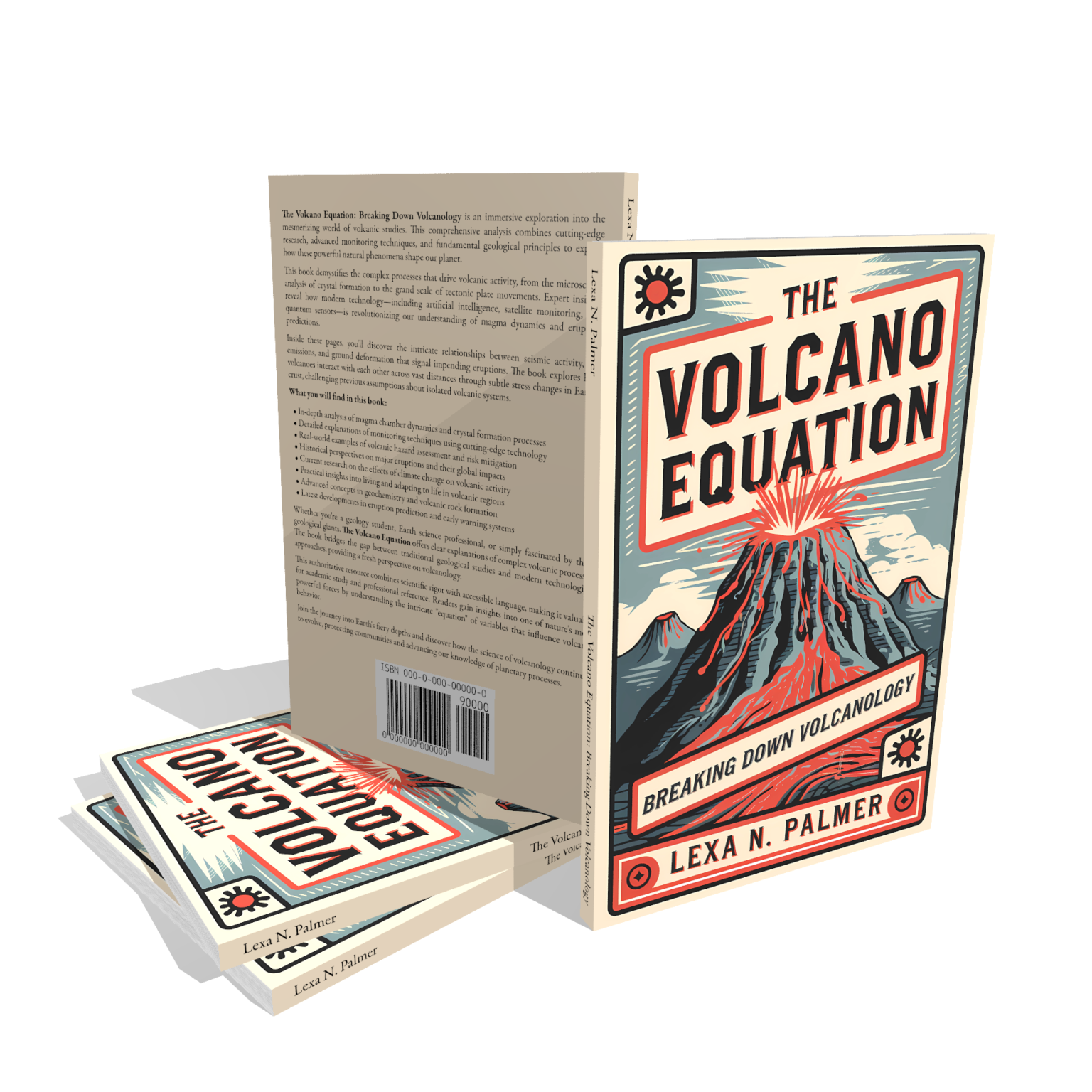The Volcano Equation Breaking Down Volcanology – Complete Guide to Volcanic Science and Eruption Prediction

Understanding volcanic science and eruption prediction has never been more critical with nearly 1,500 potentially active volcanoes worldwide threatening millions of lives. “The Volcano Equation: Breaking Down Volcanology” transforms complex geological concepts into accessible knowledge, bridging the gap between academic research and practical volcanic hazard management. This comprehensive guide tackles the urgent need for better volcanic science education, offering readers deep insights into magma dynamics, monitoring techniques, and community preparedness strategies that could save lives.
Unlike other volcanology books that focus solely on theoretical concepts, this resource emphasizes real-world applications of volcanic science, making it invaluable for students, researchers, and anyone living in volcanic regions. The author expertly weaves together cutting-edge monitoring technology, historical case studies, and climate impact research to provide a holistic understanding of volcanic systems and eruption prediction methods.
What You’ll Discover
- Advanced Eruption Prediction Techniques: Master the latest monitoring technologies including satellite imagery, seismic data analysis, and AI-powered prediction models that revolutionize volcanic hazard assessment
- Magma Dynamics and Chamber Processes: Learn how magma composition, crystal formation, and chamber stability influence eruption behavior and volcanic hazard potential
- Comprehensive Risk Assessment Strategies: Discover proven methodologies for evaluating volcanic threats and implementing effective community preparedness initiatives
- Climate-Volcano Interaction Analysis: Understand how changing climate conditions affect volcanic activity and learn to adapt monitoring strategies accordingly
- Historical Eruption Case Studies: Explore detailed analyses of major volcanic events and their global impacts to enhance your predictive capabilities
- Interdisciplinary Collaboration Framework: Develop skills for working across geological, technological, and community safety disciplines in volcanic risk management
Why This Book Matters
The volcanic science field desperately needs accessible resources that translate complex geological processes into actionable knowledge for hazard mitigation. This book fills that critical gap by providing evidence-based strategies for volcanic risk assessment while addressing common misconceptions about eruption prediction. The integration of traditional geological studies with modern technological advancements creates a comprehensive framework that enhances both academic understanding and practical application in volcanic hazard management.
With volcanic threats increasing due to growing populations near active volcanoes and climate change impacts, this resource empowers readers to contribute meaningfully to community safety and scientific advancement. The emphasis on real-world applications ensures immediate practical value for professionals working in geology, emergency management, and environmental science.
Key Features
This comprehensive ebook spans multiple chapters covering magma dynamics, eruption prediction, monitoring techniques, and community preparedness strategies. Available as an instant digital download, you’ll receive immediate access to detailed geological analyses, case studies, and practical frameworks for volcanic risk assessment. The format allows for easy reading on any device, with printable exercises for hands-on practice. Also available as audiobook on Google Play Books and Spotify for convenient listening during commutes or workouts.
Frequently Asked Questions
How accurate are modern volcanic eruption prediction methods?
Modern eruption prediction combines multiple monitoring techniques achieving significant accuracy improvements over traditional methods. The book details how satellite monitoring, seismic analysis, and AI algorithms work together to identify pre-eruption patterns, though prediction remains challenging due to each volcano’s unique characteristics and behavior patterns.
What makes this volcanology guide different from academic textbooks?
Unlike dense academic texts, this book emphasizes practical applications of volcanic science with accessible language and real-world case studies. It bridges theoretical knowledge with actionable strategies for volcanic hazard assessment and community preparedness, making complex geological concepts understandable for diverse audiences.
Can beginners understand the volcanic science concepts presented?
Absolutely. The author uses clear explanations and avoids unnecessary jargon while maintaining scientific accuracy. Complex topics like magma dynamics and monitoring technology are broken down into digestible concepts with practical examples that enhance understanding for readers at all levels.
Get Your Copy Today
Transform your understanding of volcanic science with this comprehensive guide to eruption prediction and hazard assessment. Available for instant download at just $6.99, this ebook provides exceptional value compared to expensive courses or specialized workshops. Also available as audiobook on Google Play Books and Spotify for flexible learning during commutes or workouts. Purchase your copy through all major ebook retailers including Apple Books, Barnes & Noble, and Kobo to begin mastering volcanic science and contributing to safer communities today.
Watch the Video Review

